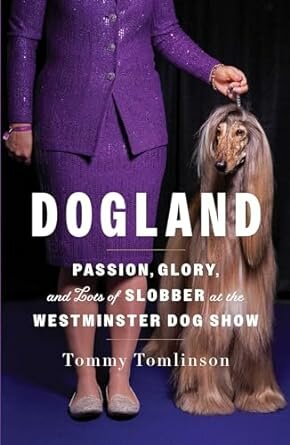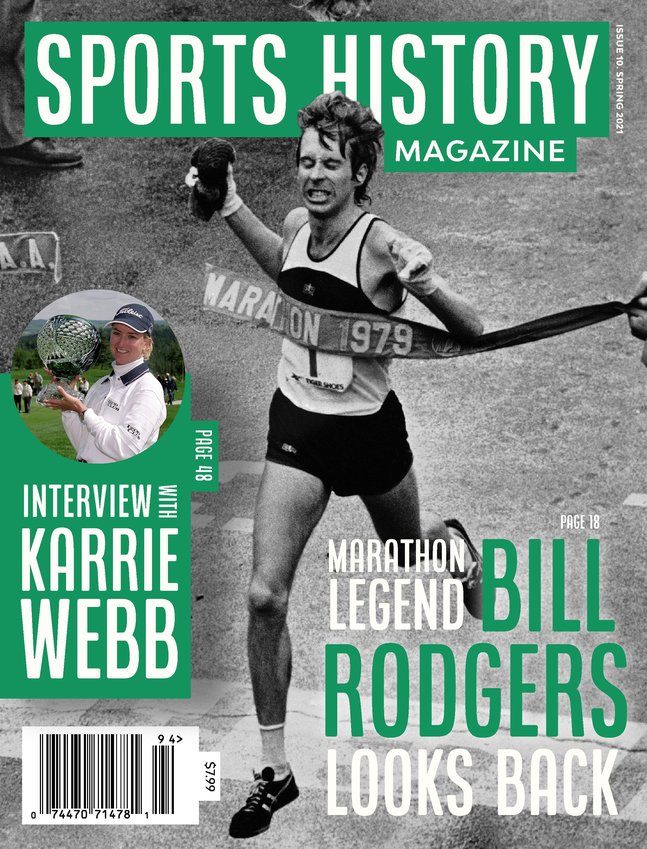Picking Winners at the Westminster Dog Show
Celebrating a 148-year-old canine beauty pageant
Over 2,500 dogs representing 12 countries and every U.S. state are set to parade at the USTA Billie Jean King National Tennis Center in Queens, New York.
The four-legged friendlies will be strutting, hopping, and posing in front of panels of judges at the 148th annual Westminster Kennel Club Dog Show, a contest that was first held in 1877.
Only 116 dogs from 46 unique breeds have ever won the tournament's most prestigious prize.
Just to qualify for the Westminster competition is a long journey. From a dog’s early age, owners carefully tend to their diets, grooming, and teeth, in addition to training them to patiently stand in front of a judge.
"That five minutes in the ring doesn't seem like a lot, but to get them into physical and mental condition takes hours and hours each week," says Lori Pelletier, one of this year’s breed judges.
The day’s biggest honor is the Best in Show (BIS) award, which draws from a sort of beauty contest playoff.
In the initial rounds, dogs compete at their own breed level and then advance to their respective groups- Sporting, Hound, Working, Terrier, Toy, Non-Sporting, and Herding. The highest scoring canine in each category then moves on to the BIS final.
When 3-year-old Pekingese, Wasabi, won in 2021, he beat out eight others of the same breed to eventually face off against six winners from the other dog groups.
Judges compare each canine to the ideal version of their breed, officially called the 'Standard'. These are two-to-three-page documents that detail every breed's "perfect" size, shape, and personality.
In German Shepherds, for example, dark almond-shaped eyes, a muscular neck, and a powerful stride are important details. Characteristics like a nose that isn't mostly black, or hanging ears, would disqualify the competitor.
When Pelletier is judging Terriers, she is not only comparing each dog to the standard, she's looking for "Terrier spirit." In other words, she's looking at how they move and present themselves relative to their historic roles as working dogs.
"The Norfolk and the Norwich...have to have the spunk to go into a hole in the ground and corner that fox," she explains.
Officials spend only three minutes up-close with every dog, but according to Pelletier, the judging starts as soon as each one steps into the ring. She immediately notes the breed type and whether it has an attitude that captures her attention.
At the end of the tournament, champion and handler take home more than just a trophy. The reign begins the next day with media appearances on morning television shows and visits to major sites around the Big Apple.
Like a beauty pageant winner, the dog also becomes a national ambassador, traveling as “America’s Dog” and occasionally even making stops at the White House for a Presidential meet and greet.
The Westminster extravaganza originated as a show for gun dogs, mainly Setters and Pointers that were owned by a group of hunters who met regularly at New York City’s Westminster Hotel.
They later formed into a kennel club that handed out prizes such as pearl handled pistols, and even donated money to the ASPCA.
The best of the breeds spectacle was popular from the outset, drawing over 1,200 dogs and extending the furry pageantry into a 4-day affair.
Forrest & Stream magazine called the inaugural show on May 8, 1877 a triumph that represented “culture, wealth and fashion of the town”.
The canine gala has gone uninterrupted for all of its 148 years, even surviving the Great Depression and two World Wars.
It is the most prestigious of the three such major displays in the U.S. The other two are the National Dog Show and the AKC National Championship.
SIGN UP FOR OUR FREE WEEKLY NEWSLETTER, OR JUST $30/YR WITH ARCHIVES, APP & AUDIO
Over the years, the competition’s rich and colorful registrants included Staghounds from General George Custer’s pack, Deerhounds bred by the Queen of England, a Siberian Wolfhound bred by the Czar of Russia, and Collies owned by J.P. Morgan.
The BIS was first awarded in 1907 to Warren Remedy, a Smooth Fox Terrier who would go on to win the coveted prize for the next two years as well.
The modern rules, which introduced five group competitions, first began in 1924. The Hound and Herding categories were added in 1930 and 1983, respectively.
1933 saw baseball legend Lou Gehrig enter his black German Shepherd, Afra of Cosalta, in the competition. The female took second place in the Open Bitch class.
2008 witnessed Uno as the first Beagle to claim the BIS title, setting off a celebration that was dubbed “Beaglemania” by the media.
The youngest dog to ever win was a 9-month-old Rough Collie (1929) and the oldest was a 10-year-old Sussex Spaniel named Stump (2009). Stump was later featured on the cover of AARP magazine.
BUY- 'Guide to a Well-Behaved Dog'
As a breed, the Terrier Group has earned the most honors since the show’s inception.
Even before reaching the BIS, Wire Fox Terriers have placed in the group competition 59 times since 1924, including 24 first-place finishes.
Pelletier explains why that category often stands out to judges:
"To get a Wire Fox Terrier to the level of being campaigned as a champion, or as what we call a 'special,' it takes an incredible amount of work, and that work is usually rewarded."
Predictable grooming habits also help make them ideal show dogs. "On a terrier, we can actually groom the dog and know that in 12 weeks, this dog is going to be in perfect condition for Westminster."
By comparison, dogs like golden retrievers, which shed seasonally, can require more work to prepare for the Spring show.
Still, while Terriers continue to be a popular choice, they no longer account for most of the winners.
Since 1980, they have won the top spot 10 times, with the Sporting and Toy groups closely behind at 8 each. Herding have lagged with only 2 first place finishes in that timeframe.
BUY- 'Puppy Training in 7 Easy Steps'
Interestingly, Westminster's most crowned breeds tend to diverge from what the American public favors for pets.
The BIS trophy has eluded half of 2023's 10 most popular breeds - French bulldogs (#1), Labrador Retrievers (#2), Golden Retrievers (#3), Dachshunds (#6), and Rottweilers (#9) never earned the prize.
In contrast, the dominant Wire Fox Terrier ranks at the bottom half as the 104th most popular out of the 200 listed breeds.
This year, one new breed will debut on the Westminster stage - the Lancashire Heeler. But with the Herding group's limited BIS success, history suggests that the Heeler will be, well…an underdog.
Emma Rubin is a freelance writer and journalist based in Louisville, KY.
SIGN UP FOR OUR FREE WEEKLY NEWSLETTER, OR JUST $30/YR WITH ARCHIVS, APP & AUDIO















